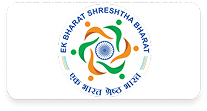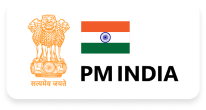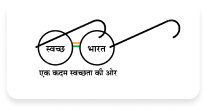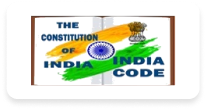- TV(I) Section underthe Broadcasting Wing regulates the grant of permission for uplinking and downlinking of Satellite TV channels in India and renewal thereof in terms of the applicable policy guidelines for uplinking and downlinking of the satellite TV channels in India. The permission for setting-up the Teleport/ Teleport Hub, uplink facility by News Agency, use of SNG/DSNG/ ENG equipment, uplinking of foreign channels through Indian Teleport etc. are issued by the TV (I) Section. In order to promote ‘Ease of Doing Business’ and ‘Ease of Compliance’, the Policy Guidelines for Uplinking and Downlinking of Satellite TV Channels in India, 2022 have been issued in November 2022. These guidelines have a simplified and rationalized structure viz-a-viz the previous guidelines. To facilitate grant of various permissions, Ministry has launched a revamped version of the Broadcast Seva Portal (https://new.broadcastseva.gov.in) wherein applicants can apply online for grant of permission for the above services.
- Broadcasting Wing (BC Wing) is the concerned wing for all matters related to regulation of content telecast on private satellite TV channels and transmitted/re-transmitted through cable television network in terms of the Programme and Advertisement Codes prescribed in the Cable Television Networks (Regulation) Act, 1995 and the Cable Television Networks Rules, 1994 framed there under. Every broadcaster through various Policy Guidelines has been mandated to follow the Programme and Advertisement Code prescribed under the Cable Television Networks (Regulation) Act, 1995 and Rules framed thereunder. The content broadcast on private FM Radio channels and Community Radio Stations are governed as per the GOPA guidelines and AIR Broadcast Code.
- The Cable Television Networks Rules, 1994 have been amended vide Notification No.GSR 416(E) dated 17.06.2021 thereby providing for a statutory mechanism for redressal of grievances/complaints of citizens relating to content broadcast by television channels. These rules are called the Cable Television Networks (Amendment) Rules, 2021. The Rules provide that in order to ensure observance and adherence to the Programme Code and the Advertising Code by the broadcaster and to address the grievance or complaint, if any, relating thereto, there shall be a three-level structure (complaint redressal structure) as under: Level I - A self-regulation by broadcasters; Level II - Self-regulation by the self-regulating bodies of the broadcasters; and Level III - Oversight mechanism by the Central Government.
- The Government has also established Electronic Media Monitoring Centre (EMMC) as state-of-the-art facility with a view to monitor and record the content of satellite TV channels with regard to violation of Programme and Advertisement Codes enshrined under the Cable Television Networks (Regulation) Act, 1995 and Rules framed thereunder. EMMC is equipped to monitor and record around 900 channels and currently monitors all permitted channels.
- BP&L Section in Broadcasting Wing is concerned with policy matters related to administration of Cable Television Networks (Regulation) Act, 1995 and Rules thereunder, The Sports Broadcasting Signals (Mandatory Sharing With Prasar Bharati) Act, 2007 and Rules thereunder, DTH Guidelines, HITS Guidelines, IPTV Guidelines and TRP Guidelines and miscellaneous policy issues pertaining to broadcasting sector.
- Apart from dealing with framing of Guidelines for DTH, HITS, IPTV and TRP agency, the requests for grant of permission/licence/registration under these guidelines from applicants are processed in BP&L Division. The issues related to amendments in the policy/guidelines are undertaken by the BP&L Division.
- The proposals to declare the sporting events/games of national importance under the Sports Broadcasting Signals (Mandatory Sharing with Prasar Bharati) Act, 2007 are processed in the BP&L Division in consultation with Ministry of Youth Affairs and Sports, Ministry of Law and Justice and Prasar Bharati and the sporting events/games which are identified as national importance are notified in the Gazette of India.
- Further the Telecom Regulatory Authority of India (TRAI) gives its recommendations from time to time on Telecommunication and Broadcasting sectors on request from the Government or suo-motu. The recommendations given by TRAI in respect of Broadcasting sector are processed by BP&L Section and if required, arranges to convene meetings of the Inter-Ministerial Committee (IMC) formed to examine such recommendations.
- To provide efficient and transparent regime for the growth and management of Broadcasting Sector, an online portal “Broadcast Seva” has been developed and launched. The Broadcast Seva portal provides single point facilities to the various stakeholders and applicants for various permissions, registrations, licences etc. issued by MIB for broadcast related activities.
About Broadcasting Wing
Community Radio Station
| S. No. | Title | Date | Type/Size | Download/Details |
|---|---|---|---|---|
| 1 | Inviting of Entries for the 11th Edition of National Community Radio Awards | 01-09-2025 | ||
| 2 | Appeal to promote and publicize PM-KISAN scheme | 31-07-2025 | ||
| 3 | Study on Listnership, Reach and Effectiveness of Community Radio Stations in India | 25-07-2025 | ||
| 4 | Notice for accepting applications for financial assistance under the Scheme "Supporting Community Radio Movement in India" in both online or offline mode. | 24-07-2025 | ||
| 5 | Budgetary allocation for Central Sector Scheme (CSS) – Supporting Community Radio Movement in India from FY- 2021-2026 ( Rupees in Crore). | 22-07-2025 | ||
| 6 | O.M. for closing applications with no response from the applicant after 60 days of return of application on Broadcast Seva Portal | 16-06-2025 | ||
| 7 | Advisory to promote National Integration and Social Harmony | 13-05-2025 | ||
| 8 | Advisory for publicity on themes of Poshan Pakhwada | 11-04-2025 | ||
| 9 | Notice for intimating the date of Commissioning of CRS and validity of WOL | 11-04-2025 | ||
| 10 | Advisory to all the Commissioned Community Radio Stations to apply for Financial Assistance under the scheme “Supporting Community Radio Movement in India "through Broadcast Seva Portal (online) portal only. | 04-04-2025 | View | |
| 11 | Advisory regarding Jan Aushadhi Diwas | 05-03-2025 | View | |
| 12 | Advisory regarding International Day of Yoga, 2025 | 04-03-2025 | View | |
| 13 | Advisory regarding WAVES Competition- Community Radio Content Challenge | 06-11-2024 | View | |
| 14 | Content Sharing portal for Community Radio Stations(CRSs) | 16-10-2024 | View | |
| 15 | Advisory to all CRS operators regarding spectrum charges | 18-07-2024 | View | |
| 16 | ADVISORY FOR VERFICATION OF COMISSIONED CRS | 07-06-2024 | View | |
| 17 | ADVISORY FOR GOPA RENEWAL | 06-06-2024 | View | |
| 18 | Advisory to add Community Radio in the name of their stations | 01-09-2023 | View | |
| 19 | Advisory to fill proforma with issues regarding DLWOL | 01-09-2023 | View | |
| 20 | Advisory for CRS Name | 16-08-2023 | View |
Private FM Radio Stations
FM Cell is tasked with the Implementation of the Policy Guidelines on Expansion of FM Radio Broadcasting Services through Private Agencies. Under this Policy, FM channels are allotted to successful bidders through an ascending e-auction process. Letter of Intent (LOI) holders sign Grant of Permission Agreement (GOPA) with the Ministry. Collection of Annual Fee from permission holders which is payable in advance quarterly, changes in their shareholding pattern and Board of Directors as well as their foreign investment proposals are dealt with according to the policy guidelines. Regulatory actions related to violation of GOPA provisions on matters related to Co-location of private FM channels, annual fee, broadcast content including Issuance of Advisories are also dealt. As on date, 388 private FM radio channels are operating from 113 cities spread across the country.
Private Satellite TV Channels
As per existing regulatory framework, programmes and advertisements telecast on private satellite TV channels are regulated in accordance with the Programme Codes and Advertising Codes prescribed under the Cable Television Networks (Regulation) Act, 1995 and rules framed thereunder. The Programme and Advertising Codes contain a wide range of parameters to regulate programmes and advertisements on TV channels.
The Cable Television Networks Rules, 1994 have been amended vide Notification No.GSR 416(E) dated 17.06.2021 thereby providing for a statutory mechanism for redressal of grievances/complaints of citizens relating to content broadcast by television channels. These rules are called the Cable Television Networks (Amendment) Rules, 2021. The Rules provide that in order to ensure observance and adherence to the Programme Code and the Advertising Code by the broadcaster and to address the grievance or complaint, if any, relating thereto, there shall be a three-level structure (complaint redressal structure) as under: Level I - A self-regulation by broadcasters; Level II - Self-regulation by the self-regulating bodies of the broadcasters; and Level III - Oversight mechanism by the Central Government.
Any person aggrieved by the content of a programme of a channel as being not in conformity with the Programme Code or the Advertising Code may file his complaint in writing to the broadcaster or to Advertising Standards Council of India (ASCI) if such pertains to the Advertising codes laid by it. A broadcaster shall establish a grievance or complaint redressal mechanism and appoint an officer to deal with the complaints received by it. The broadcaster/ ASCII shall, within the stipulated time, takes a decision and communicate the same to the complainant. The grievances/ complaints which have not been addressed by the broadcaster shall be dealt and disposed of by the Self-regulating bodies (Level-II), registered by Central Government, within stipulated time.
As a part of oversight mechanism, Central Government has established an Inter-Departmental Committee (IDC) for hearing grievances or complaints and refer to the IDC grievances or complaints arising out of the decision of the self-regulating body, or if no decision has been taken by the self-regulating body within the stipulated time, or on receipt of such other complaints or references relating to violation of Programme Code or Advertising Code as it may consider necessary. The IDC is chaired by the Additional Secretary in the Ministry of Information and Broadcasting and consists representatives from the Ministry of Women and Child Development, Ministry of Home Affairs, Ministry of Electronics and Information Technology, Ministry of External Affairs, Ministry of Defence. In March 2023, domain experts from Press Council of India (PCI), Bar Council of India (BCI), Federation of Indian Chambers of Commerce & Industry (FICCI), Confederation of Indian Industry (CII) have been included as IDC member.
The Government has also established Electronic Media Monitoring Centre (EMMC) as state-of-the-art facility with a view to monitor and record the content of satellite TV channels with regard to violation of Programme and Advertisement Codes enshrined under the Cable Television Networks (Regulation) Act, 1995 and Rules framed thereunder. EMMC is equipped to monitor and record around 900 channels and currently monitors all permitted channels.
website of EMMC - https://emmc.gov.in/)
Ministry issues advisories to TV channels to adhere to program and advertising codes and in relation with other important issues from time to time
TV-INSAT
"TV(INSAT) Section under the Broadcasting Wing regulates the grant of permission for uplinking and downlinking of Satellite TV channels in India and renewal thereof in terms of the applicable policy guidelines for uplinking and downlinking of the satellite TV channels in India. The permission for setting-up the Teleport/ Teleport Hub, uplink facility by News Agency, use of SNG/DSNG/ ENG equipment, uplinking of foreign channels through Indian Teleport etc. are issued by the TV (INSAT) Section. In order to promote ‘Ease of Doing Business’ and ‘Ease of Compliance’, the Policy Guidelines for Uplinking and Downlinking of Satellite TV Channels in India, 2022 have been issued in November 2022. These guidelines have a simplified and rationalized structure viz-a-viz the previous guidelines. To facilitate grant of various permissions, Ministry has launched a revamped version of the Broadcast Seva Portal (https://new.broadcastseva.gov.in) wherein applicants can apply online for grant of permission for the above services."
| S. No. | Title | Type/Size | Download/Details |
|---|---|---|---|
| 1 | Uplinking and Downlinking Guidelines 2022-English | View | |
| 2 | FAQS on Uplinking and Downlinking Guidelines 2022 | View | |
| 3 | Uplinking and downlinking guidelines 2011 | View | |
| 4 | Single AFFIDAVIT | View | |
| 5 | Format of PBG | View | |
| 6 | Provisional application form for Uplinking of foreign TV channel from India teleport | View | |
| 7 | Relaxation of Minimum Net Worth | View | |
| 8 | Ministry of Home Affairs Proforma for seeking security clearance | View | |
| 9 | Advisory on Obligation of Public Service Broadcasting | View | |
| 10 | Advisory on Obligation of PSB | View | |
| 11 | Clarification regarding minimum net worth requirement for Downlink Only Satellite TV channels | View | |
| 12 | Clarification regarding Policy Guidelines for Uplinking and Downlinking of Satellite TV Channels,… | View | |
| 13 | Clarification on the definition of Director under the Guidelines | View | |
| 14 | Press Release on Uplinking and Downlinking Guidelines 2022 | View | |
| 15 | Satellite TV channels under Devotional Spiritual Yoga Category | View | |
| 16 | Bharat Kosh accounts head details | View | |
| 17 | Various Account Heads of TVI Section | View | |
| 18 | Advisory on cancellation of MSOs | View | |
| 19 | Uplinking and downlinking Guidelines 2005 | View |
Distribution Platforms & others
Digital Satellite News Gathering
As per the Policy Guidelines for Up linking and Downlinking of Television Channels 2022 (Policy Guidelines, 2022.):
- A DSNG/SNG' means Digital Satellite News Gathering and refers to a satellite based electronic technology/equipment that allows a TV channel I Teleport / Teleport hub to broadcast from remote locations outside of a TV studio;
- 'ENG' services means Electronic News Gathering and refers to electronic technologies that allow a TV Channell Feleport/Teleport Hub/news reporter to broadcast from remote locations outside the TV studio using cellular network/internet/leased line or any other medium/equipment (including bag pack), other than by DSNG/SNG;
Purchase and use of DSNG/SNG equipment:
- The following entities are eligible for purchase of DSNG/ SNG equipment and its use after due permission of the Ministry:
1. Company/LLP having permission of the Ministry to operate a teleport, for the period of such permission.
2. Company/LLP having permission of the Ministry for uplinking a news channel, for the period of such permission.
3. Company/LLP having permission by the Ministry of a news agency, for the period of such permission.
- An entity referred to in sub-para (1) may, for the purpose of seeking permission for purchase of a SNG/ DSNG equipment, apply online on the Broadcast Seva portal along with documents specified therein on payment of processing fee as specified in Appendix I of the Policy Guidelines, 2022.
- The Ministry shall, after satisfying itself that the application is in order and the proposal is otherwise fit for approval, preferably within 15 days of the receipt of the application, grant permission to the entity for the purchase of the equipment, subject to the following conditions:
1. The DSNG/SNG signals should only be transmitted to the permitted teleport of the permission holder and uplinked for broadcasting through permitted satellite through that teleport only.
2. The company/LLP shall follow the roll out obligations as specified in Appendix III of the Policy Guidelines, 2022.
3. The use of DSNG/ SNG would be permitted only in those areas/regions/States which are not specifically prohibited by the Ministry of Home Affairs.
4. The company/ LLP would submit the purchase documents of DSNG/SNG terminals and inform the Ministry about the placement of these terminals at the various locations.
5. The company/LLP permitted to use DSNG/SNG shall apply to WPC for frequency authorization.
6. The permitted company/LLP shall maintain a daily record of the location and the events that have been covered and uplinked by DSNG/SNG terminals and down-linked at their main satellite earth station and produce the same before the licensing authority or its authorized representative, which will include officers of Ministry of Home Affairs, as and when required.
7. The permitted company/LLP shall not enter defense installations.
8. The equipment should not be taken in the areas cordoned off from security point of view.
9. The company/LLP/channel desiring to use DSNG/SNG would give an undertaking that it would be used for live newsgathering and footage collection for captive use only.
10. Violations of any of the aforementioned terms and conditions would lead to revocation/ cancellation of the permission to use the DSNG/SNG.
11. The permitting authority may modify' the conditions laid down or incorporate new conditions, as and when considered necessary.
12. The permitted company/ LLP shall abide by the terms and conditions laid down by Department of Space and WPC Wing, Ministry of Communications including payment of applicable fees/royalties to WPC Wing for use of spectrum.
13. The permitted company/LLP will provide a suitable hardware and software solution to the agency specified by the Ministry to view live, the location of all permitted DSNG/ SNG/ ENG terminals.
Use of DSNG/SNG Equipment:
- The use of DSNG/SNG would be permitted to News and Current Affairs channels uplinked from India for live news! footage collection and point-to-point transmission.
- A News agency having permission under para 14 of the Policy Guidelines, 2022 can use DSNG/SNG for collectionl transmission of news! footage.
- A company/LLP having a permitted non-news channel which is uplinked from its own permitted teleport, can use DSNG/SNG equipment for their approved channels, for transfer of video feeds to the permitted teleport.
- Only teleport operators! channel owners permitted by the Ministry and Doordarshan may hire SNG/ DSNG equipment! infrastructure to other broadcasters who are permitted to uplink from India.
- The uplinking should be carried in encrypted mode, so as to be receivable only in closed user group. The signal should only be downlinked at the permitted teleport of the licensee and uplinked for broadcasting through permitted satellite through that teleport only.
- Any unauthorised usage! hiring of DSNGISNG, either by a non-permitted entity or by a permitted channel owner shall be deemed to be a violation under these Guidelines.
- A non-news or a foreign channel may use the services of a permitted DSNG/SNG equipment for the purposes mentioned in Part VII of the of the Policy Guidelines, 2022.
Local Cable Operators
Local Cable Operators (LCOs) are granted registration under the Cable Television Networks (Regulation) Act, 1995 and the rules made there under as amended from time to time. The LCOs receives signals from Multi-System Operators (MSOs) and transmits them to the consumer households and hence serves as the last mile operators in the cable TV service chain. They also interact directly with the consumers. The details of LCOs operating in the country are published in the National Register of LCOs at
Multi System Operators
Multi System Operators (MSOs) are granted registration under the Cable Television Networks (Regulation) Act, 1995 and rules made thereunder as amended from time to time. They receive cable television signals from the broadcasters and transmit them to the consumer’s households either directly or through Local Cable Operators (LCOs). MSO Registration applicants are required to apply on Broadcast Seva Portal at
Teleport/Uplinking hub
As per the Policy Guidelines for Uplinking and Downlinking of Television Channels 2022 (Policy Guidelines, 2022.):
- A 'Teleport" means an earth station facility from where multiple TV channels carrying audio, video content can be uplinked to a geostationary satellite on permitted frequency band, with due approval of WPC;
- 'Teleport Hub" means set-up of teleports for uplinking of TV channels where multiple antennas are installed for different satellites, and for each antenna for each satellite, Wireless Operating License from WPC is required to be obtained;
Furnishing of Application:
A company or an LLP may apply online on Broadcast Seva on payment of processing fees specified in Appendix I of the Policy Guidelines, 2022 for setting up a Teleport/teleport hub subject to fulfilment of the following conditions:
a. It has a minimum net worth of an amount specified in Appendix II of the Policy Guidelines, 2022 as on the closing day of the financial year immediately preceding the year in which the application is made, as reflected in its Audited/unaudited Balance Sheet of that financial year;b. Foreign Direct Investment in the company/LLP is in accordance with the Foreign Direct Investment (FDI) Policy of the Government of India, as notified by the Department for Promotion of Industry and Internal Trade (DPIIT), from time to time;
- The online application shall be processed from the view point of eligibility conditions, and shall be subjected to clearance and approval by the Department of Space and Ministry of Home Affairs (MBA).
- If considered necessary, for reasons to be recorded in writing, the Ministry may cause inspection of the physical premise/location, to ascertain the veracity of the claims made in the application.
Grant of permission:
- The Ministry shall, preferably within 30 days of receiving clearance and approval of Ministry of Home Affairs and other authorities, and after satisf'ing itself that the applicant company/LLP is fit for grant of permission, issue a Letter of Intent (LOI) requesting the company/LLP to pay the permission fees for the first year, furnish the Performance Bank Guarantee (PBG) as mentioned in Appendix III of the Policy Guidelines, 2022 and Security Deposit as mentioned in Appendix IV of the Policy Guidelines, 2022 within the stipulated period.
- After making the payment of the first year permission fee and furnishing the PBG and Security Deposit, the Ministry shall, preferably within 15 days of receipt of such payment and furnishing of the PBG, grant permission for ten years by an order in writing, to the company/LLP for setting up the teleport.
The Grant of permission to a company/LLP under sub-para (1) shall be subject to the following conditions:
1. It signs an agreement titled 'Grant of Permission Agreement' with the Ministry;2. It pays the annual permission fees as stipulated in Appendix I of the Policy
3. It pays the applicable fees! royalty to the WPC for use of spectrum and abide by all the terms and conditions laid down for the purpose by the Department of Space and WPC;
4. It uplinks from the permitted teleport only those TV channels which have been permitted! approved by the Ministry, and stops uplinking a TV channel as soon as permission! approval for such channel is withdrawn or suspended by the Ministry, or on specific order of the Ministry to stop such uplinking for such time period as may be specified in that order;
5. It follows the roll out obligation with regard to operationalization of the teleport as laid down in Appendix III of the Policy Guidelines, 2022.
- The Ministry may, for reasons to be recorded in writing, refuse to grant permission. Provided that every such refusal shall be communicated to the company/LLP along with reasons for refusal.
- The Company/LLP shall as soon as the teleport becomes operational, inform the Ministry regarding its operational status.
Renewal of permission:
- A company! LLP which is given permission under para 4 of the Policy Guidelines, 2022, may apply for renewal of permission at least three months prior to the end of the month in which the initial permission is due to expire, on the Broadcast Seva portal on payment of processing fees specified in Appendix I of the Policy Guidelines, 2022.
- The permission for renewal will be for a period often years and shall be subject to conditions similar to that required for permission under paras 3 and 4 of the Policy Guidelines, 2022.
Regulations relating to Foreign Channels
- These guidelines inter-alia aims to make India a uplinking teleport hub, for that purpose, a provision has been introduced in the extant guidelines under which, a teleport operator can uplink a foreign channel for being downlinked outside India. This will result in ease of doing business and also enable earning of foreign exchange for the teleport operator.
- A form has been devised and is placed on the Broadcast Seva Portal (link given below) of this Ministry wherein the applicant teleport operator would fill the requisite details and seek permission of the Ministry
(https://new.broadcastseva.gov.in/digigov-portal-webapp Upload?flagiframeAttachView&attachld 14071 5400&whatsnew=true)
Television Rating Points Agencies
The Television audience measurement agencies assign Television Rating Points (TRP) to different programs and channels based on the viewership of those channels. TRP represents the popularity of any channel or program and has an impact on the advertisement given to the channels. Any Company registered under the Indian Company's Act, 1956 or 2013 for providing Television Rating Services in India can apply as per the guidelines issued by the Government of India dated 16th January, 2014. For more details kindly visit this Ministry’s broadcast seva portal at https://new.broadcastseva.gov.in/digigov-portal-web-app/.
Headend-in-the-Sky
HITS serves the whole country by providing its signals through satellite to many Multi System Operators (MSO) or cable operators who can further send signals to the customers using their own cable networks. HITS operator uses satellite to transmit a bouquet of channels while a cable operator does so through cable. HITS delivers satellite channels to cable operators through satellite rather than an on ground control room. Any Company registered under Indian Company's Act, 1956 or 2013 can apply as per the guidelines issued by the Government of India for providing "Headend-in the-Sky (HITS) for Broadcasting Service in India” dated 26th November 2009 (as amended up-to 6th November, 2020). For more details kindly visit this Ministry’s broadcast seva portal at https://new.broadcastseva.gov.in/digigov-portal-web-app/scan?requestType=ApplicationRH&actionVal=viewAllService.
Direct to Home (DTH)
Direct-to-Home (DTH) television is a method of receiving satellite television by means of signals transmitted from direct-broadcast satellites. Any Company registered under Indian Company's Act, 1956 or 2013 for providing DTH Broadcasting Services in India can apply as per the guidelines issued by Government of India dated 15th March, 2001 (as amended up-to 30th December, 2020). For more details kindly visit this Ministry’s broadcast seva portal at https://new.broadcastseva.gov.in/digigov-portal-web-app/scan?requestType=ApplicationRH&actionVal=viewAllService
Digital Addressable System
| S. No. | Title | Type/Size | Download |
|---|---|---|---|
| 1 | List of Application Cancelled, Closed and reject as on 31.10.2025 | View | |
| 2 | List of Registered MSOs as on 31.10.2025 | View | |
| 3 | List of MSO Registration Surrendered, Cancelled and Expired as on 31.10.2025 | View | |
| 4 | List of Application Cancelled, Closed and reject as on 30.09.2025 | View | |
| 5 | List of Registered MSOs as on 30.09.2025 | View | |
| 6 | List of MSO Registration Surrendered, Cancelled and Expired as on 30.09.2025 | View | |
| 7 | List of Application Cancelled, Closed and reject as on 31.08.2025 | View | |
| 8 | List of Registered MSOs as on 31.08.2025 | View | |
| 9 | List of MSO Registration Surrendered, Cancelled and Expired as on 31.08.2025 | View | |
| 10 | Application Cancelled, Closed and reject as on 31.07.2025 | View |













